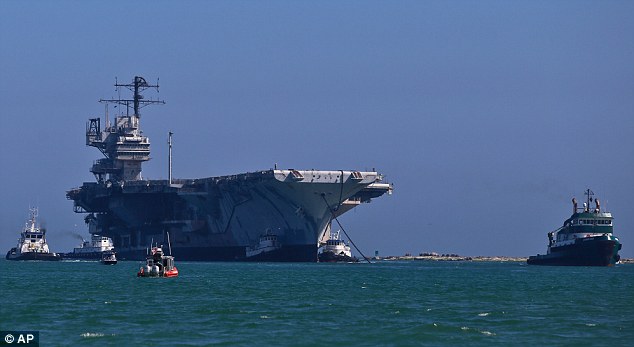At the turn of the 20s, the US Navy was considering the proper name set for their new experimental "aircraft carriers." Initially, given the limited endurance and striking power of the aircraft then in service, the role of these aircraft carriers was conceived to be that of a light, fast scouting unit. Therefore, the initial two USN carriers, a pair of converted Jupiter-class colliers, were named after light, agile birds of prey: USS Hawk (CV-1) and USS Eagle (CV-2). The two carriers proved their value in the Fleet Problems of the 20s, and provided a template for all US Navy carriers that would follow. As aircraft grew, however, they became more and more unfit for frontline service, and were overshadowed by newer units. Converted to seaplane tenders, they were both lost in the early days of the Pacific War.
The subsequent class of carriers, converted from Lexington-class battlecruisers on the slips under the terms of the Washington Naval Conference of 1923, were similarly renamed for their new role. Originally named after US battles, they were also renamed after birds of prey in their new service: USS Harrier (CV-3), USS Osprey (CV-4), and USS Falcon (CV-5).
The three Harrier-class carriers would served as the primary fleet carriers of the USN throughout the 20s. However, these three conversions consumed most of the USN's carrier tonnage, and further development of the type in the US would only proceed after the 1930 London Conference. By this time, the carrier had gained a small but vocal advocacy within the Navy. Thus, the 30s would see three new fleet carriers commissioned to fill out the increased carrier tonnage allocations achieved at London. To appease Congressional skeptics of military buildup, the first purpose-built of the US Navy were given less aggressive names than their predecessors: USS Raven (CV-6), USS Cardinal (CV-7), and USS Pigeon (CV-8).
The carriers of the Harrier and Raven-class would go on to achieve tremendous fame in the Pacific Theater of World War Two, particularly CV-8, which would become the most decorated unit in US naval history, including being the only carrier to survive the the famous 10-carrier "battle of three navies," Third Wake Island with flight operations capacity, providing air cover to the rest of the Allied forces, including her damaged sister the USS Raven and the British HMS Ark Royal (code-named USS Lark), as the three surviving carriers in the Pacific theater retreated from the Pyrrhic victory. The Pigeon's particular luck at surviving combat and bringing her crews home victorious continued to manifest during the South Pacific campaign, and she earned the nickname "Homing Pigeon" for both this fact and the almost preternatural good luck of her air group in finding, fixing, and destroying IJN warships as she and the remainder of the US Pacific fleet pushed to retain the strategic advantage until the arrival of the seemingly-endless Goshawk-class fleet carriers.
Retired post-war, CV-8 would go on to find a home in New York City's East River as a floating museum (as the famous line went, "We've got so many pigeon's, what's one more?"). The name lived on with the super-carrier Pigeon (CV-62), whose shear bulk would add the nickname "Flying Pig" to the classic "Homing Pigeon" over almost fifty years of service. Today, the third US carrier Pigeon is on the slips as an Eagle II-class nuclear supercarrier, carrying on the most famous name in naval aviation.











